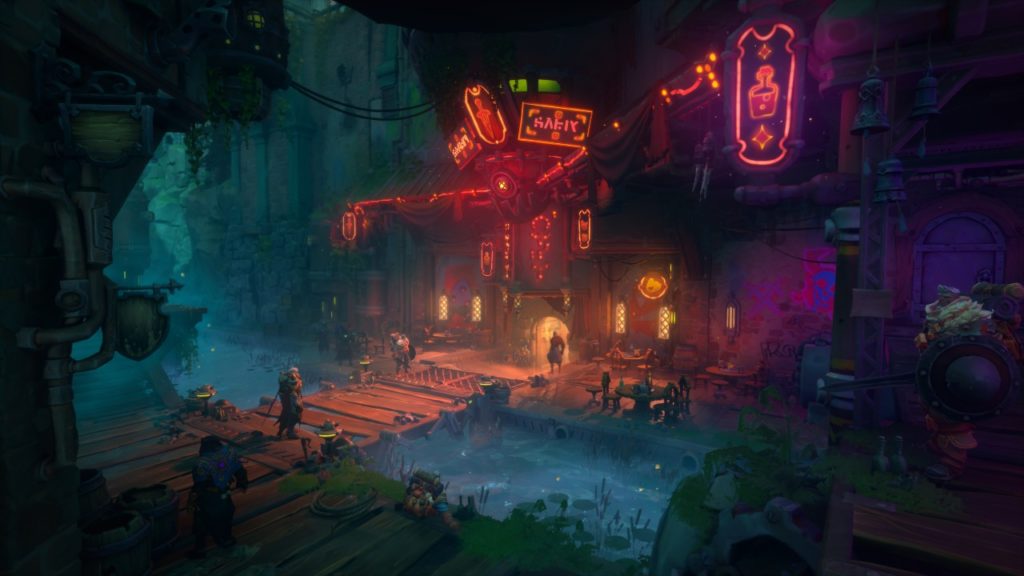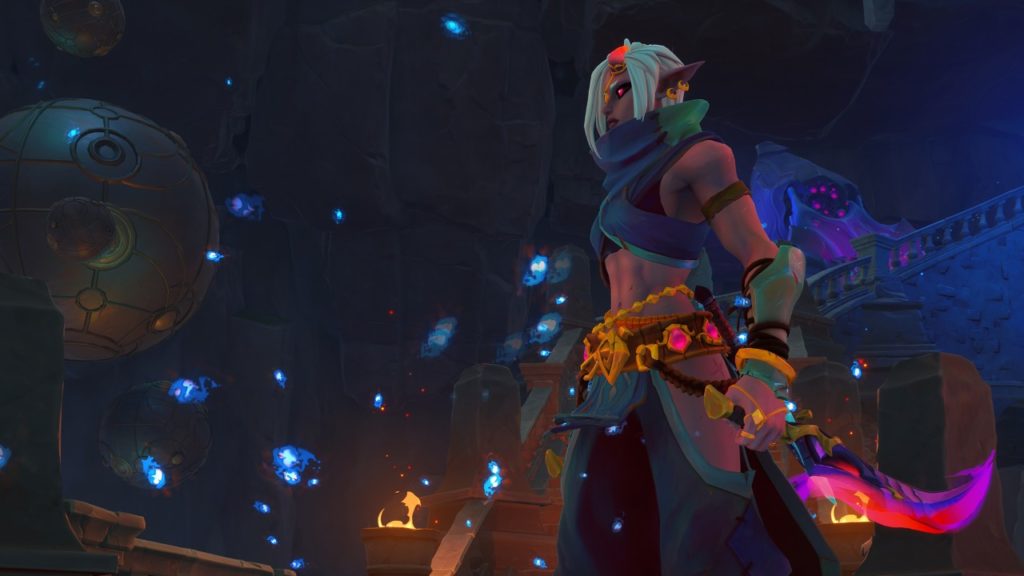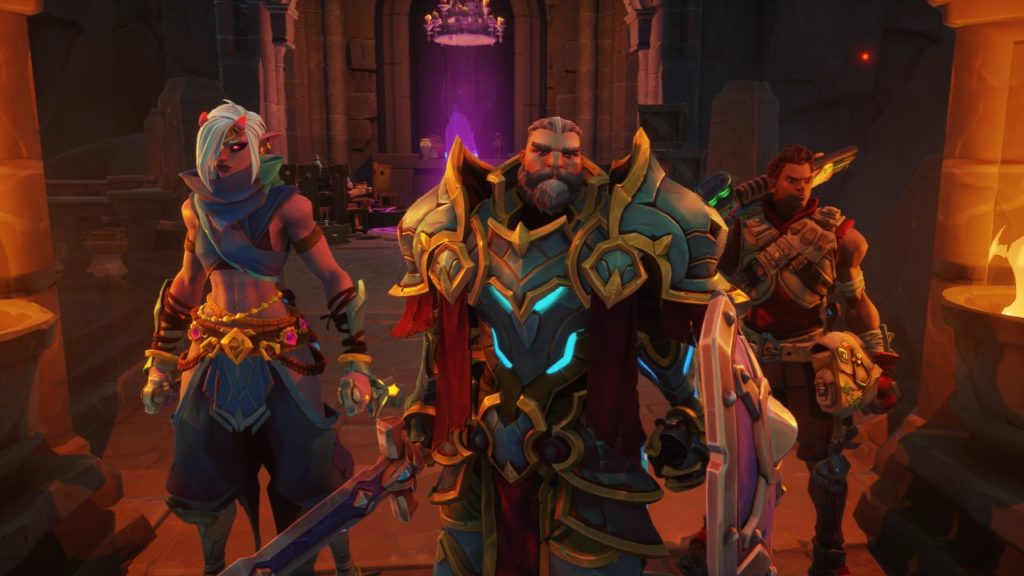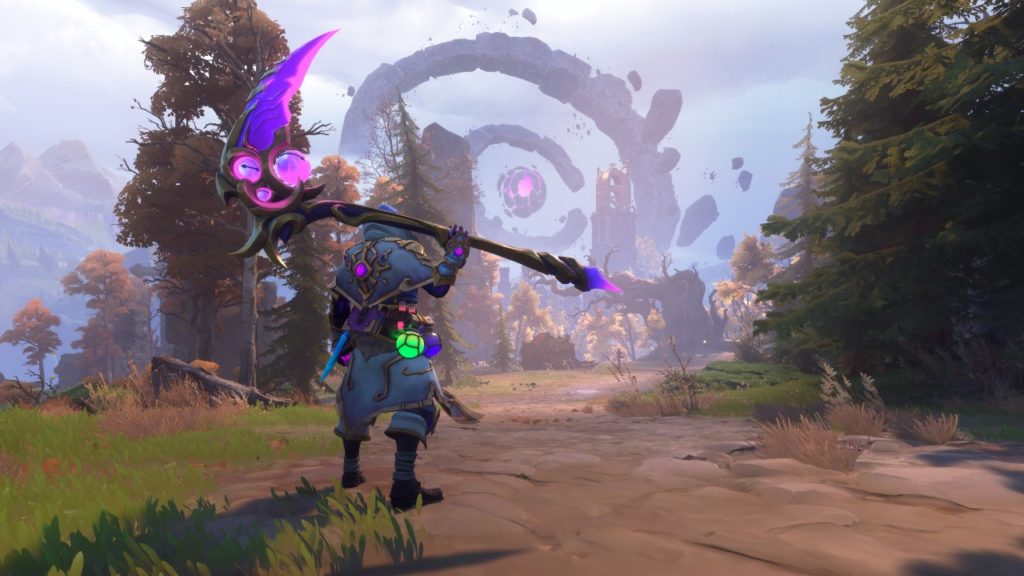Wayfinder seems like Warframe meets Battlechasers | Hands-on preview
I hate to jump the gun, or put the cart before the horse, or count my chickens before they hatch or – well, you get the message – but say the words “Airship Syndicate”, “live service RPG”, and “Digital Extremes” in a single sentence and my bank balance will spontaneously jettison money directly at your face. Add the words “free to play” thereafter and I’ll have to sheepishly scoop up all my spent money while avoiding eye contact. Let’s see what it does to you: “Wayfinder is a new free-to-play live service RPG from Airship Syndicate and Digital Extremes.” See what I mean? Money and other fluids, everywhere.
Having recently had the chance to go fully hands-on with the Wayfinder closed beta, I can also report that it’s looking and feeling very good so far – but that’s a massive dollop of “so far”. It’s very early days – to the point that a lot of the art and dialogue were placeholders, some of the audio isn’t present yet, it needs a hell of a lot of balancing, optimisation and, well, development, and I was playing with huge watermarks all over the screen because Airship Syndicate mean business with this baby.
For those who don’t know, Airship is the development outfit headed by Joe Madureira, the renowned comic book artist who brought Darksiders to life. They’re also the studio behind several fantastic yet underappreciated gems in Battlechasers: Night War and Ruined King: A League of Legends Story. Perhaps more notably, they developed the excellent Darksiders: Genesis a few years ago. They may not be hugely prolific yet, but their pedigree is undeniable.

Add to this that Digital Extremes are publishing it and using their wealth of experience to steer the airship, as it were. Digital Extremes are the outfit behind Warframe, widely considered to be one of the best free-to-play live service games in existence. Seriously, you’ve left some money down the front of your trousers.
But what exactly is Wayfinder? Well, it’s a fantasy RPG set in a world that mixes magic with technology, where legendary heroes called Seekers once defended the land against an all-pervading corruption called the Gloom. It’s not the most original idea, in fairness, but it sets the scene wonderfully for a world filled with history and lore, ripe for exploration.
The last surviving Seeker, Omen, found a way to extract the memories of fallen Seekers to essentially bring them back to life. Which is where you come in. Each Seeker is a hero you can control and jump between as the situation, or your mood, demands it. Acting a bit like – but not the same as – classes, these Seekers come with their own powers, move sets, gear, and abilities. For example, Wingrave is the standard tank – in so far as anything in Wayfinder is “standard”.

Armed with a sword and shield, Wingrave specialises in healing himself and the other members of his party. Then there’s Senja, a huge warrior woman with a massive axe who’s all about sudden, heavy damage. Niss is a dual dagger-wielding assassin, and Silo has a rifle (I admit I didn’t play with this guy at all, but he definitely has a rifle). Wayfinder will launch into early access in a few months with six heroes available, but once the game is released there’ll be more introduced with every new season.
Once you select a starting hero, you’ll need to unlock memory echoes over the course of multiple quests and challenges to gain access to other Seekers. While you can’t change their name, you can alter their appearance with various cosmetics, and upgrade or swap out their primary weapons. You’ll unlock different skills to mix and match with weapons, but the build diversity comes from applying accessories and Echoes. These apply modifiers to your weapons and character, altering your special abilities and stats. There’s no reason any two players will field the same characters, until some clever sort inevitably determines a “meta”, of course.
You can complete multiple quests in and around the town of Skylight for NPCs, which reward you with materials and modifiers, special keys and accessories. The most valuable items so far are Imbuements, which are applied to Wayfinder’s dungeons. Lost Zones are self-contained instances in which the real challenges – and best rewards – lie.

Using your “Gloom Dagger”, you open up a portal on the outskirts of the town to enter these zones. Each can be modified using different elemental Imbuements, which fundamentally alter the theme of the dungeon. For example, using a Shadow Imbuement will spawn different enemies and random conditions, while a Chaos modifier might convert a lot of the chests into traps, or spawn a Trickster, and NPC who will give you the chance to earn powerful rewards in exchange for keys.
The potential for variety is massive here, which is good, as this is how you’ll spend the majority of your time. Each Lost Zone also falls into one of a few different categories, such as a Hunt (where you must track down and defeat a boss), or Exploration (where the onus is on finding and looting certain items. NPCs will issue you quests for specific Lost Zones, too.
Right now, Wayfinder needs a lot of balancing. Combat is a little too easy, because so much is tipped in the player’s favour. You have multiple attacks, a parry, skills on tiny cooldowns, an instant dodge move with great i-frames, and you can even team up with other players to tackl Lost Zones or explore the overworld. Combat is fluid, satisfying, and weighty – just as you’d expect from this studio, while Digital Extreme’s influence is keenly felt in the proposed monetisation system (most content is likely to be free, except cosmetics and certain boosters, though this will need confirming at a later date).

And it looks the business. Joe Mads is a visual genius, and Wayfinder hums with his artistic style. Characters are over the top, with huge weapons, bright colours and unique, out of this world designs. Swords are roughly the size of surfboards and the world thrums with colour and life. It has a hint of Dauntless about the visuals – and the movement, come to think of it. We can expect mounts in the full game, as well as special world events, deep customisation, and a battle pass system each season.
What I’ve played of Wayfinder is incredibly early doors. The closed beta was hindered by server issues, bugs, and crashes, which marred the experience but will almost certainly help Airship Syndicate to iron out technical issues. It feels a little imbalanced at the moment and will all make more sense when the placeholders are gone, but it says something when even at this early, mostly unfinished stage, I couldn’t get enough of it.
Currently, Wayfinder ticks all the boxes on my personal gaming wishlist. Shared world, persistent events and progression, tons of loot, characters to unlock, cosmetic skins, procedural dungeons and even player-controlled variables. There’s a long way to go, even until early access launches, but this is absolutely one to watch.
Wayfinder is coming soon to PC (Steam and Epic Games Store) and PlayStation 5.




